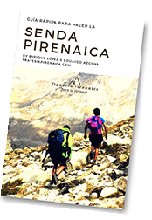Is it possible to do the GR11 with a tent?

Bringing a tent will, above all, give us more autonomy and flexibility in our itinerary.We are aware of the difficulty of keeping to schedules. This is the most common option for those who make the complete crossing, as it avoids depending on shelters that could be full and reduces the economic budget that we will need.
The price to pay will be to carry the tent and a more suitable bag (a bit warmer). Fortunately, for quite a few years now, we have been able to find several models of ultra-lightweight tents that are quite sturdy. The recommendation is not to skimp and to get a good ultralight and resistant tent, new or second-hand, to minimise weight and maximise comfort.
📜 Legality of camping along the GR 11
And now we come to the legal issues: the issue of bivouacs, free camping, free camping in the high mountain mode..., its legality depending on the place, is complicated to answer by the different regulations that exist in each autonomous community, natural parks, national parks and the exceptions that may exist around the shelters (federations, private, CEEC).
Camping by region
The legality of camping on this route varies by region and local regulations. Here is a breakdown of the main regulations by area:
This content is exclusive to members.
Already a member of the Club? Log in.
General considerations
- High altitude camping vs. free campingHigh mountain camping (pitching a tent at dusk and dismantling at dawn) is more permissive than free camping. Bivouacking (sleeping without a tent) is generally allowed outside protected areas.
- Private properties and municipalitiesThey require permission from the landowner or are governed by specific municipal regulations.

Advantages and disadvantages of carrying a tent
So, by carrying your tent you will save a lot of money and you won't have to worry about whether the free shelter you are going to is full. On the other hand, you will have more weight.
⛺ Recommendations for camping on GR11
Doing the GR11 with a tent is a viable option and offers great autonomy, although it means carrying more weight and being prepared for different weather conditions. With the right preparation and the right equipment, you can enjoy the freedom and flexibility of camping on one of the most spectacular hiking routes in the Pyrenees.

Quick guide
GR 11
with everything you need to know before undertaking the Pyrenean Path
Fastpacking is not about going faster. It's about going lighter.
If you come from classic trekking, this is the next step: learning to move with less weight,
more fluid and enjoying every kilometre more.
Join the channel and start discovering what lightness feels like.
